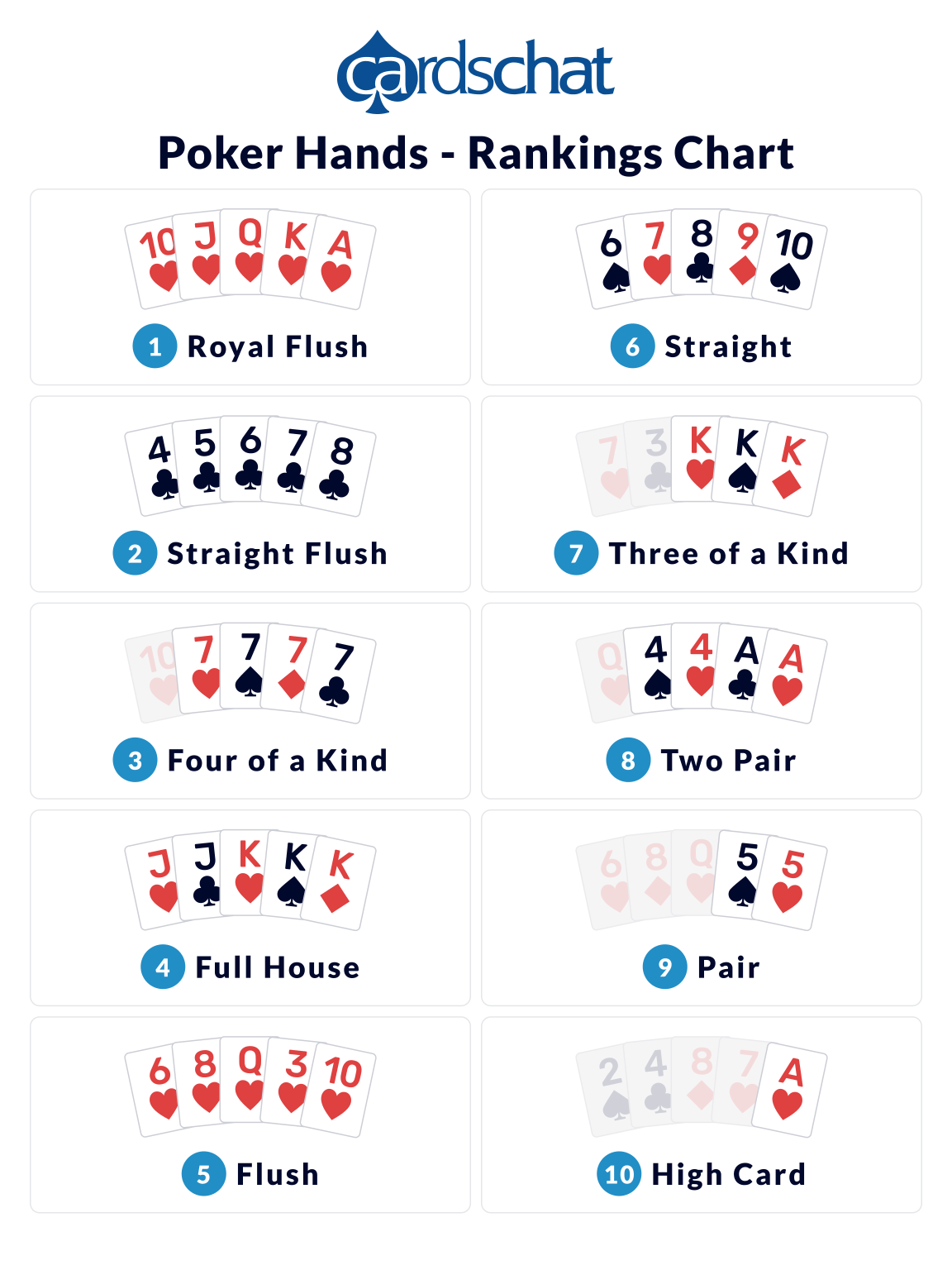
Poker is a card game that requires strategy, patience and an understanding of odds. It’s also a mental challenge that requires players to develop skills like emotional control and resilience.
The game’s earliest versions involved a single deck of cards, but modern poker games are largely played with a standard pack of 52 cards and a few jokers. These jokers can be used as wild cards.
In a standard game of poker, each player is dealt five cards face down. The player with the highest-ranking hand wins the pot. The cards are then shuffled up, and everyone has the opportunity to place a bet.
Ties are broken by looking at the high card in each hand. This card is usually a pair, but it can also be any other card that doesn’t qualify as a pair.
A flush is any 5 cards of the same suit that are consecutive in rank or sequence. A full house is 3 cards of the same rank and 2 other cards of different ranks. A straight is 5 cards of consecutive rank in more than one suit.
There are many variations of poker, each with its own set of rules and strategies. Some have more than 10 players, while others only involve two or three.
Some variants use multiple packs of cards, whereas others only have jokers. Some games also have an extra card called the “river,” which is dealt to all players after the flop.
Players can bet and raise on the flop, turn, or river by saying “I open” or “I call.” The person to their left starts betting, followed by the next player in clockwise order. The next player can either call or fold, depending on the bet and the cards in the pot.
After the first round of betting, a player can either discard or draw 1 to 3 cards. The player with the highest-ranking card after the flop wins the pot.
The player with the highest-ranking card on the turn wins the pot if no other player has a higher hand. The dealer then puts a fifth card on the board and everyone has the opportunity to bet or fold.
Stack-to-pot ratios (SPR) allow players to calculate how strong their hands need to be to get all-in on the flop and to maximize their winnings. A good SPR figure is 5.6.
If your SPR is less than 5.5, it’s best to raise the pot. This increases your effective stack and gives you more room to increase your bet if you’re holding a strong hand.
In addition, SPR can help you determine how much money you’re likely to win when the flop comes up bad. It also helps you decide whether to fold or call a bet with a weak hand.
If you want to be a successful poker player, it’s important to understand the basics of the game and build your own unique strategies. While there are some universal tips that will work for most players, every poker game is different, and you need to learn how to adapt your strategies based on the table you’re playing against.